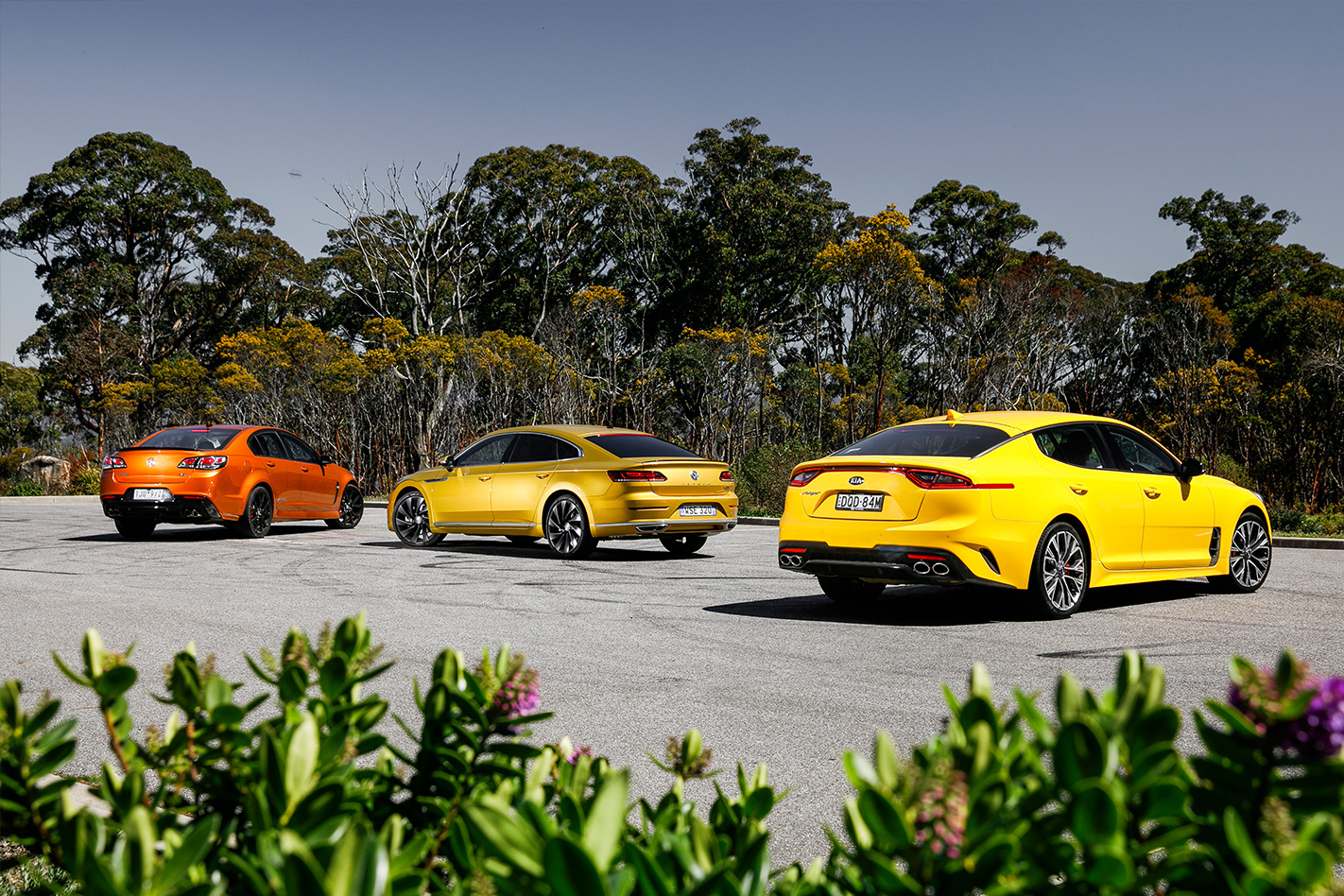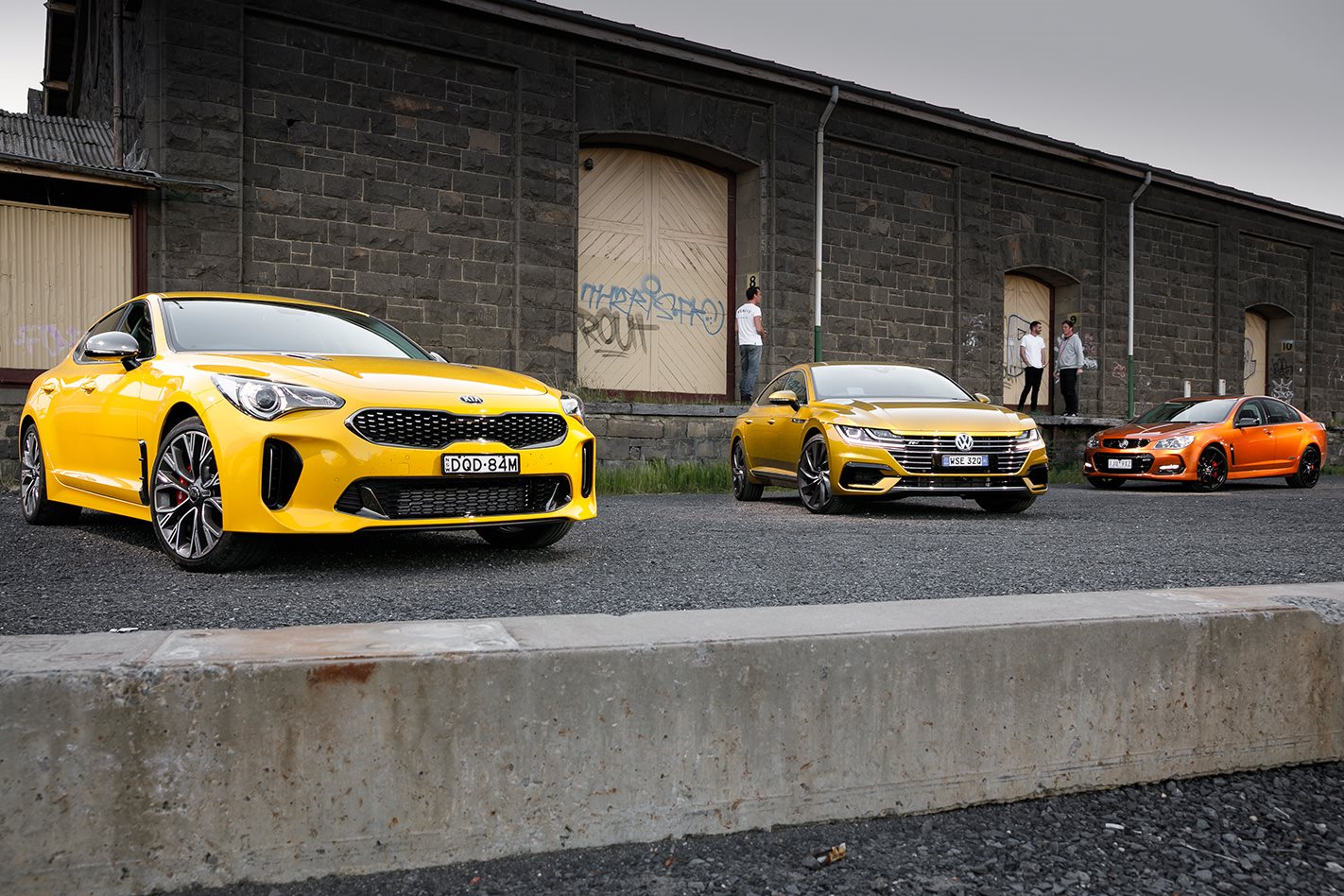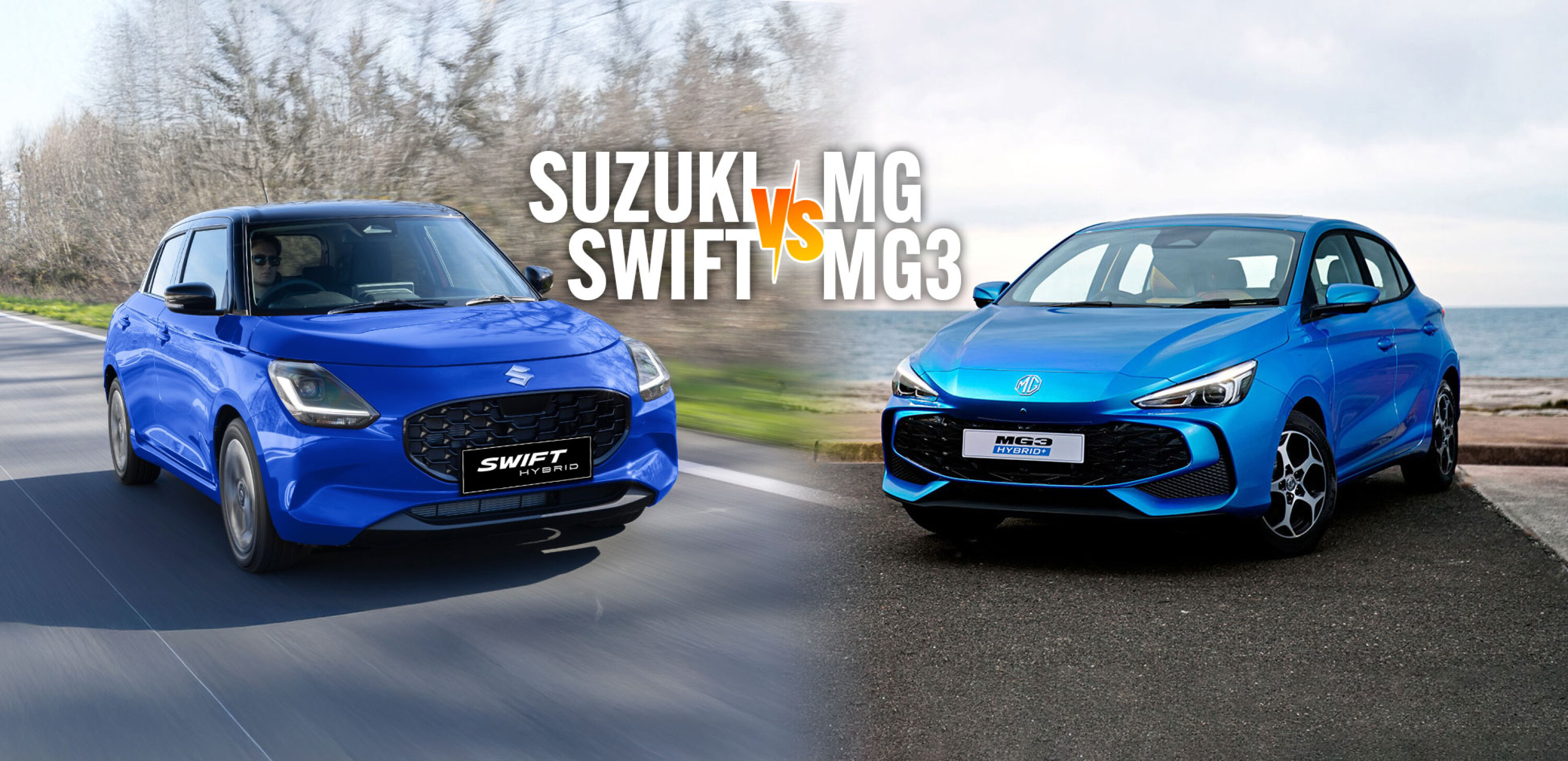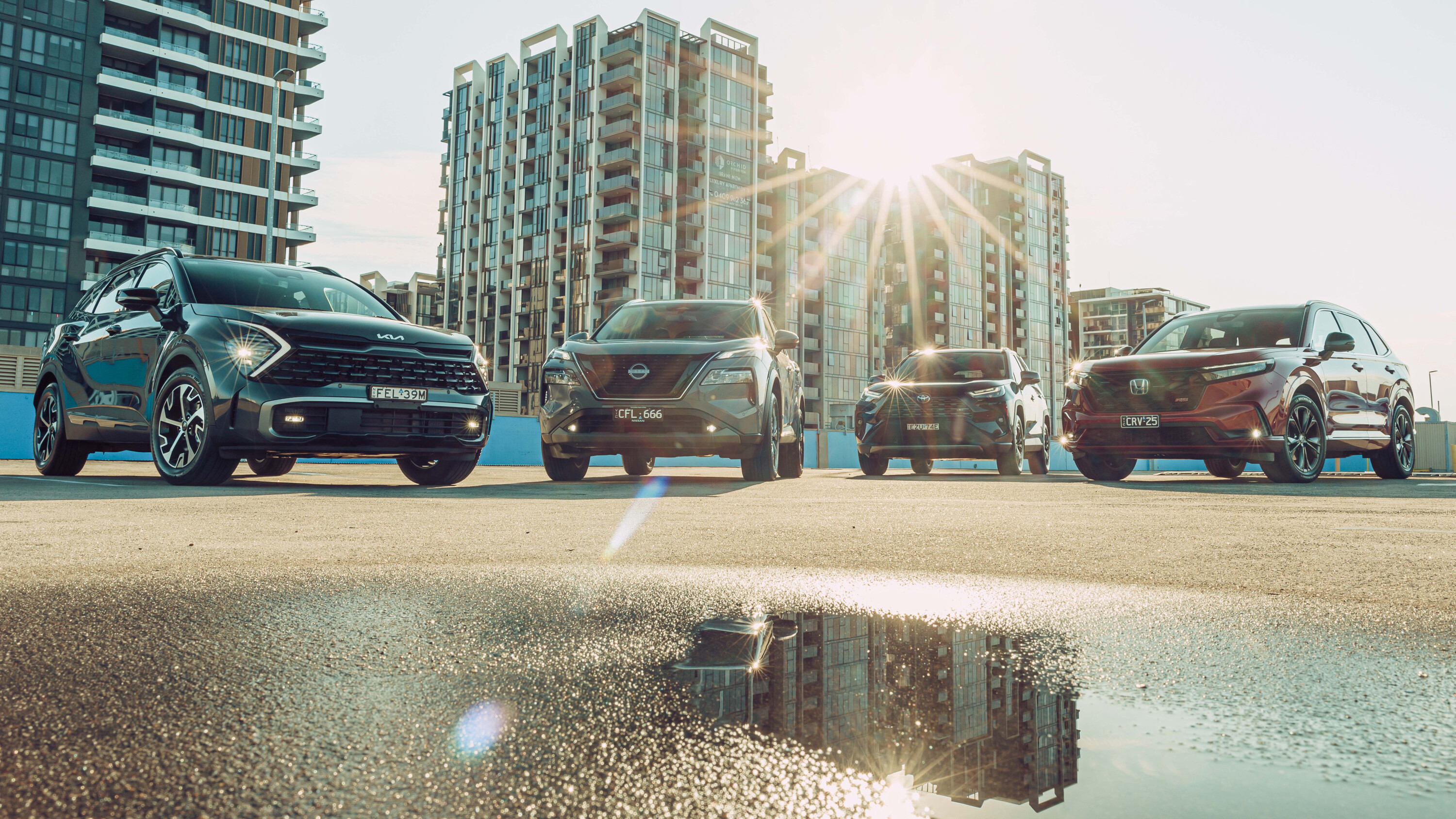GHOSTS. Somewhere out here in the grey pre-dawn light are ghosts.
An unbroken line of ’em, stretching back nearly four decades who’ve stood at a bowser before, refuelling Australian-built Commodores, jotting down records, meticulously checking tyre pressures and fluid levels before subjecting the car to the rigours of a Wheels road test. And I’ll be the last of them.
Booking a Holden Commodore SS-V Redline on the week that local production wrapped up was always going to be loaded with poignancy but, truth be told, we’re probably not going to tell you a whole lot that you didn’t know about this car already. Its role this time round would be largely contextual, here to provide a counterpoint to two Young Turks that deliver a decisively different skill set.
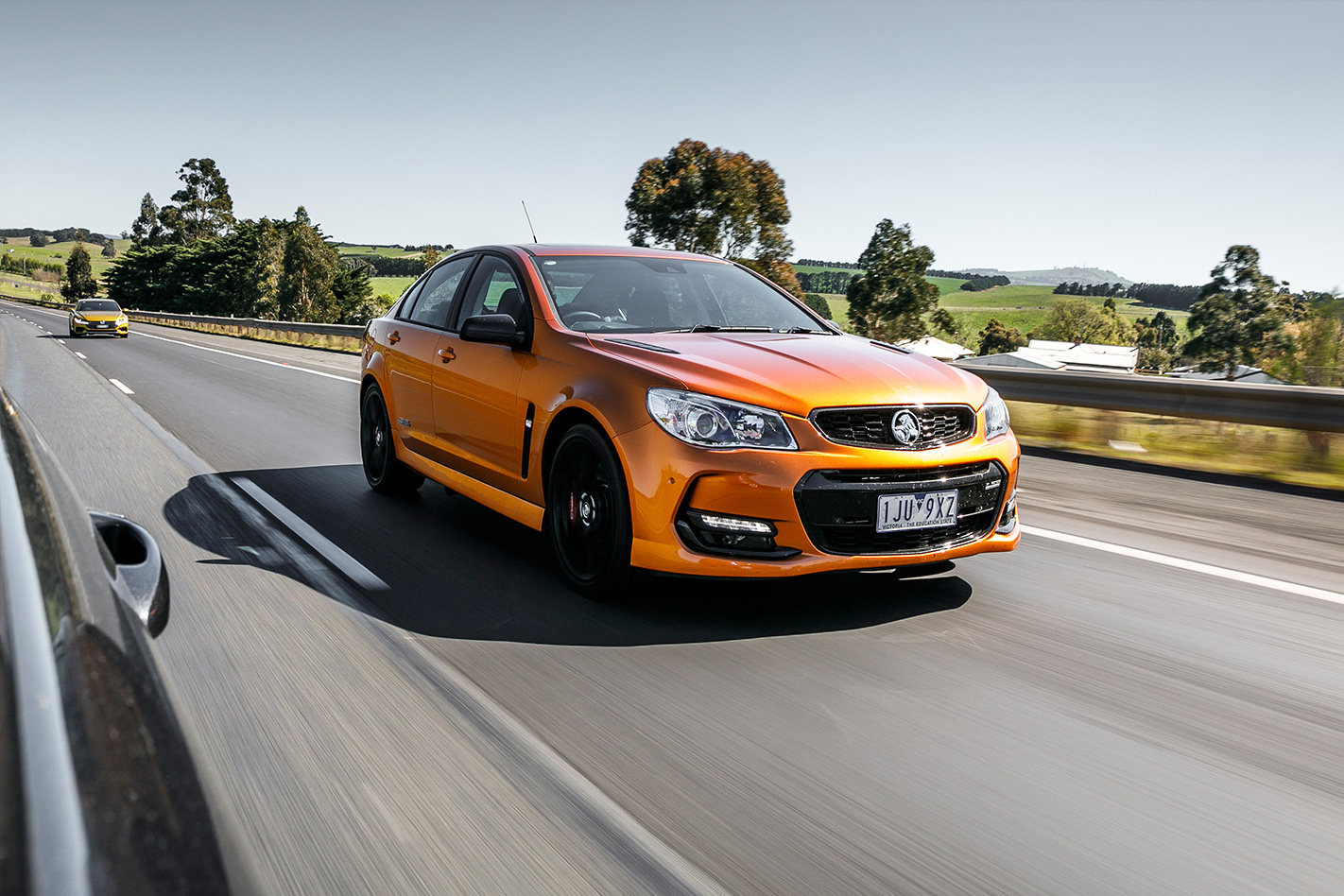
While the range-topping Stinger GT has attracted the lion’s share of press coverage, the mid-spec 330Si could well be the sweet spot in the range. Priced at $55,990, it gets the same 272kW twin-turbo V6, driving through an eight-speed automatic and limited slip diff’ to a set of 19-inch rear wheels, but does without the complex adaptive suspension system.
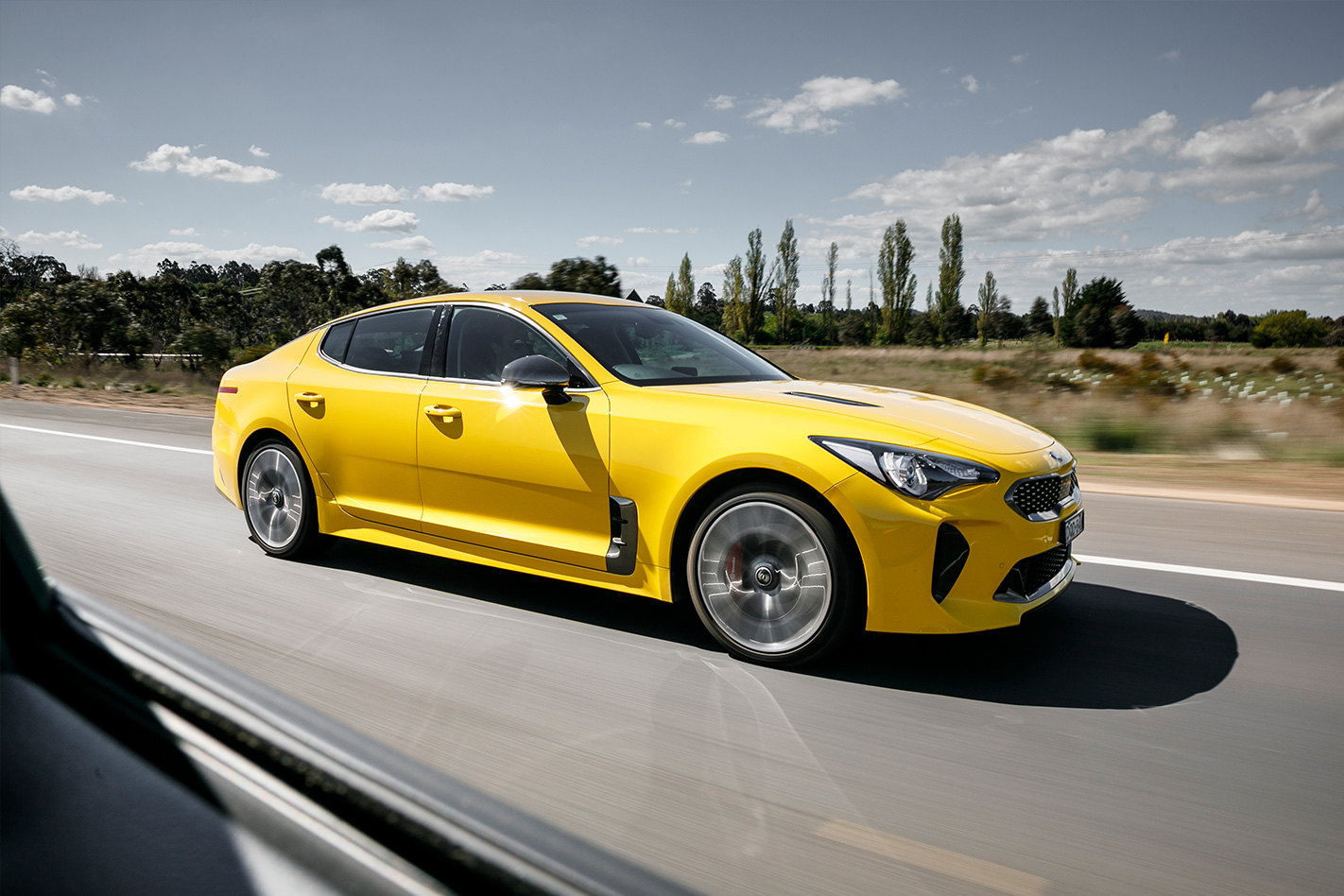
With on-demand all-wheel drive, an adaptive suspension system of stupefying bandwidth, and a mildly detuned version of the Golf R’s four-pot firecracker under the bonnet, the Arteon looks and feels like a business-class upgrade from the other two and, despite the Stinger being finished in retina-cremating Sunset Yellow, the lantern-jawed Volkswagen turned the most heads.
There’s not a bad angle on it and some of the detailing, such as the way the LED headlamps morph into the grille, the visual effect of power in the haunches, the shape and tension in the flanks, and the sculpted front wheelarches softly busting through the clamshell bonnet line are deftly and confidently executed.
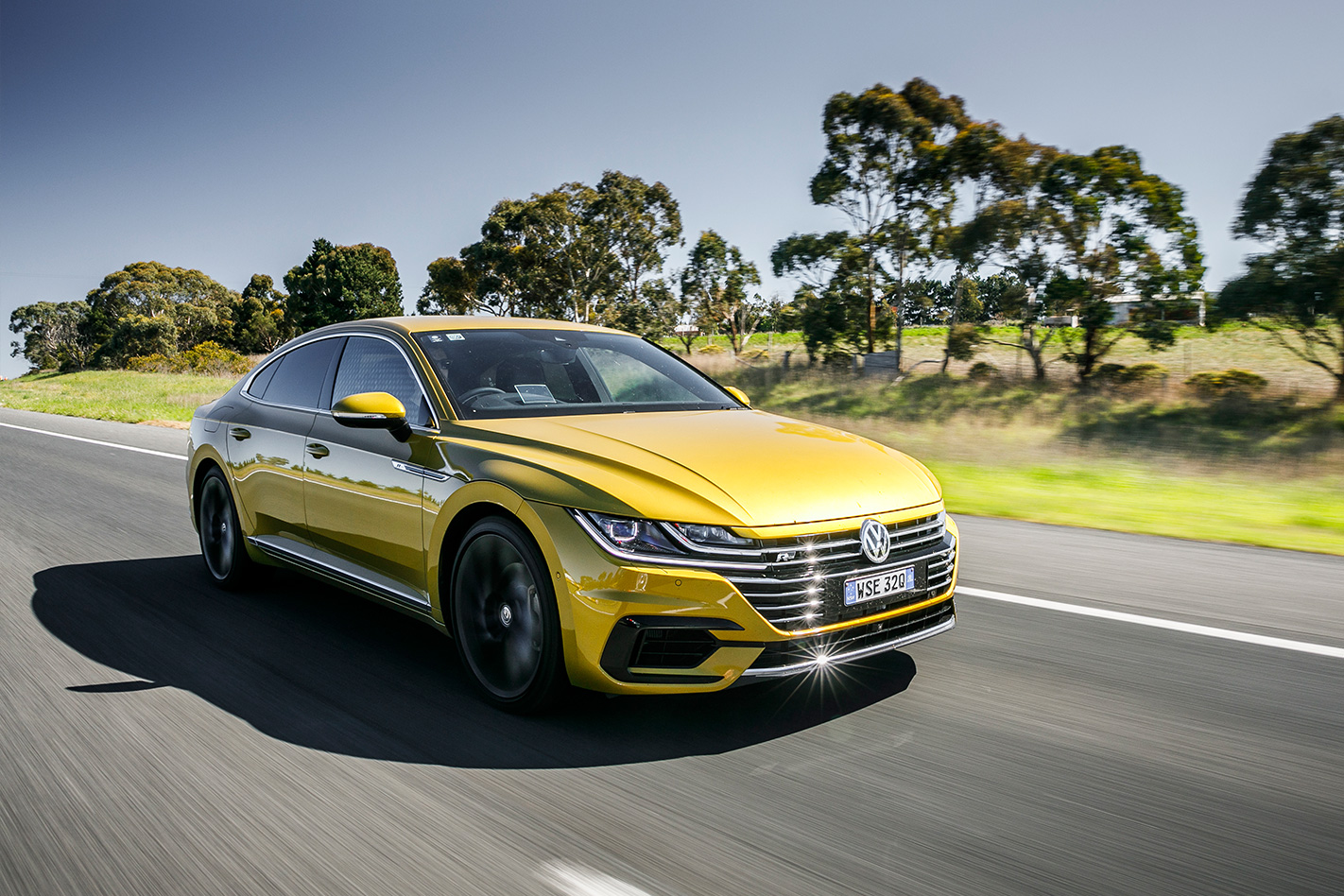
The Stinger’s not an ungainly thing per se, but it lacks the front-to-rear cohesion of some of Kia’s better designs such as the Optima and the Sorento. Even the latest Carnival expresses a more lucid aesthetic. It’s not lacking in visual punch, though.
To a certain extent, the aggro styling and the well-publicised performance figures taint your expectations of how the Stinger will drive. Thumb the starter button and you expect something tightly wound, leaching testosterone from every orifice but it’s puzzlingly mannered. The engine note is librarian meek, the steering a thing of extravagantly lubed slickness and the ride about as lumpy as a drizzle of extra-virgin.

Viscerally quick, that’s what it is. On a give-and-take road, it’s the only one of the trio that has our testers getting out, eyebrows raised, blowing out their cheeks and shaking their heads. It’s worth underlining that this is a Kia that is virtually as quick out of the blocks as a Porsche 996 GT3. Launch control makes that repeatable too, 100km/h flashing by in 4.9s.
It’s eerily effective in the way that it smashes down the strip, ladling on great gobs of twin-turbocharged torque, the eight-speed transmission best left in fire-and-forget Sport mode. At 2000rpm, it’s making around 50Nm more than the Commodore, giving it an initial advantage the Holden can never claw back.
The Arteon always grabs the holeshot, though. Its combo of launch control and all-wheel-drive traction give it a clear nose up until around 70km/h or so. Beyond that, the Stinger’s sheer grunt tells but the Arteon is far from disgraced at the strip, our 5.4-second sprint to 100km/h bettering the manufacturer numbers by a couple of tenths and exactly matching the sprinting performance – on the day – of the Commodore. Still think the Arteon is out of place in this company?
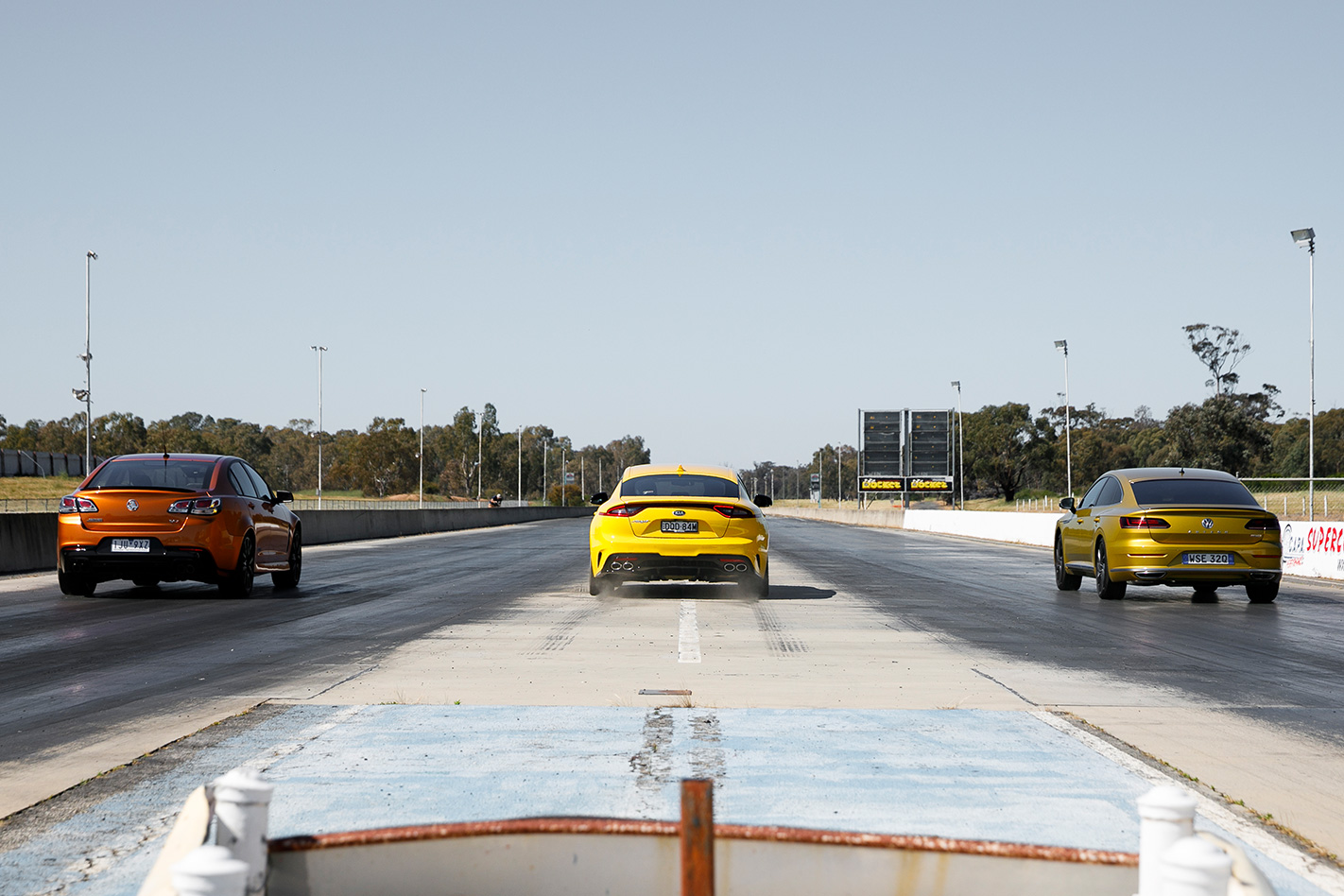
A combination of a mighty front end and a singular traction advantage out of hairpins meant that nothing could pull away from the Arteon. Up the hill, it was a different matter of course, but in terms of outright chassis effectiveness, the Volkswagen had laid down a clear marker.
Choosing how to set up the Arteon isn’t the work of a moment. The DCC adaptive suspension system has no fewer than 14 settings to choose from, the extremes bookending the steel-sprung Stinger and Commodore. Set into Sport, it’s undeniably taut, with larger imperfections folding you at the solar plexus. Body control is imperious and you tend to drive the Arteon like a hatch, leaning cab-forward on that front contact patch and letting the rear end figure things out for itself.

The four-cylinder lump growls gamely, the sound symposer injecting a subtle contrabass undertone into the cabin. Sport mode adds a bit of heft to the wheel, but it remains taciturn. The fun is in covering ground quickly and with smart munition precision. The neutrality and aloofness built into the chassis will appeal to those who don’t care to actively manage dynamic outputs. The Arteon rarely dictates an action to the driver so there’s little in the way of receive channel; you just keep the transmit button pinned.
Try to drive the Stinger in that fashion and you’re rapidly disabused of such an intention. Its body control isn’t as implacable, requiring a more sympathetic ebb and flow of inputs as the car breathes along the road. It’s more rewarding to feel the squat, sproing and roll of the Stinger’s chassis, the gentle clench/declench of its limited slip diff’, and modulate that almighty torrent of torque accordingly, but it’s rarely the quickest way along a scabby snake of bitumen.
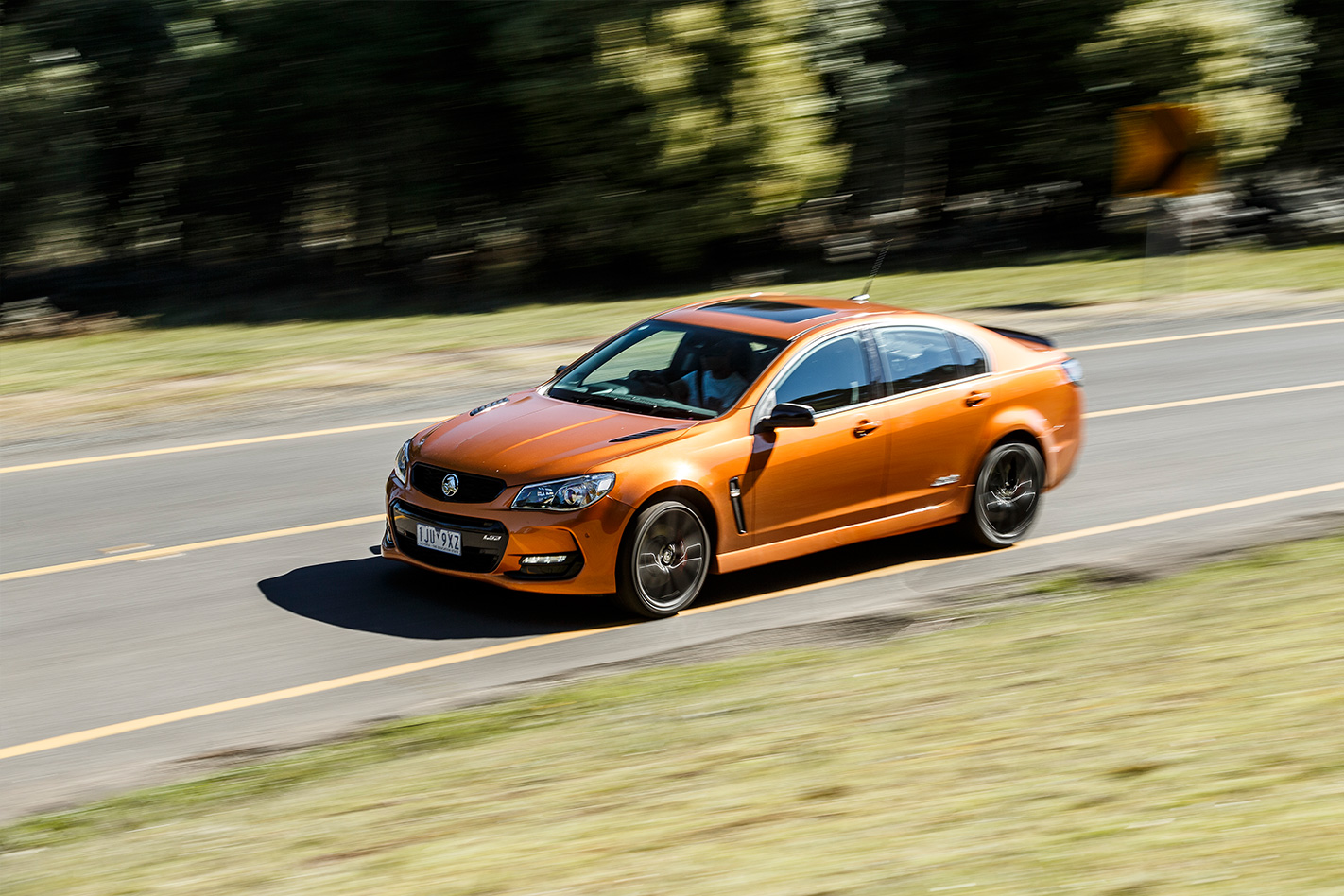
The variable-rate steering, so glib and superficially impressive at city speeds, can take a moment of acclimatisation when really frogmarched through a bend. Driver reassurance isn’t helped by the fact that the Stinger refuses to hold a gear, the transmission software being overly keen to put its cape on and leap to your rescue when it’s often not required. Switch out all the driver aids and you can then ping a flabby feeling cutout. The stability control system hoodwinks you into thinking it’s off, but lurks constantly, waiting for a moment to indulge some suppressed superhero affectation if it thinks you’ve really stuffed up.
Like the Arteon, the Stinger can cycle through engine sound settings although Minimised, Neutral and Enhanced all sound much the same. The driving mode knob also alters settings for the steering weighting and engine/transmission settings. The Smart mode does a reasonable job of figuring out what you’re trying to achieve, but we left it in Sport most of the time which, as an aside, renders the digital speedometer in italic font. Nope, us neither.
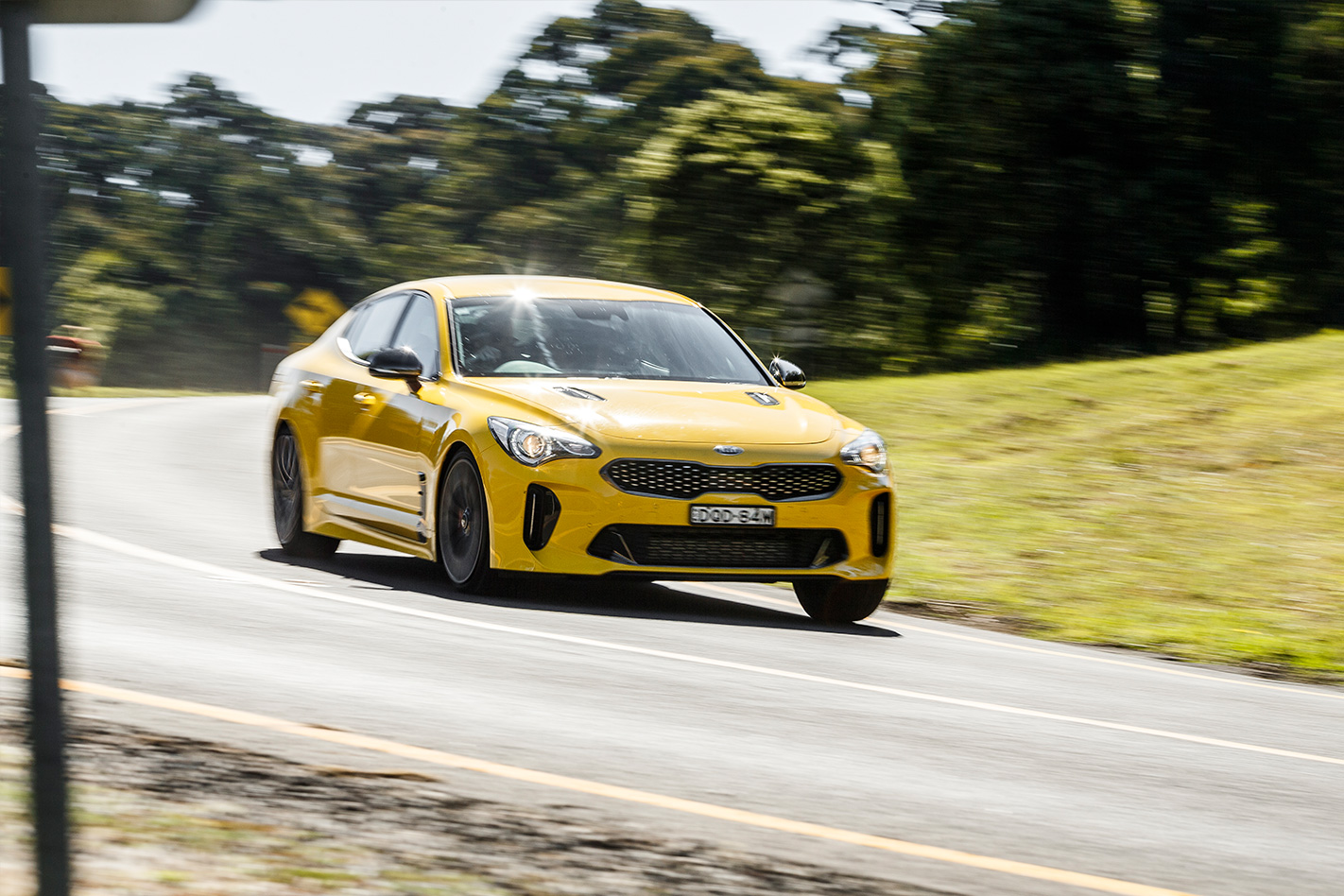
Both the Arteon and the Stinger feature liftbacks, the former’s item being a powered tailgate with a slick proximity feature that allows you to haul gear out and walk away before it closes itself. The 563-litre capacity of the Arteon aces the Stinger’s 406 litres, eclipsing the Commodore’s 496-litre boot in the process. The Volkswagen also delivers easily the most polished ride when set into its softest mode. It has other tricks too, offering the smartest suite of driver-assist functions, including an ability to pull the car to the hard shoulder and stop should it sense the driver is asleep, incapacitated or an inquisitive Wheels road tester .

Travelling in the back of the Stinger isn’t a chore either. Like the Arteon, taller passengers might feel the pinch due to the arcing roofline, but while the Volkswagen has an airy pale headliner and a low window line, the Stinger’s upticked windows and unremittingly black interior make it feel a little claustrophobic.
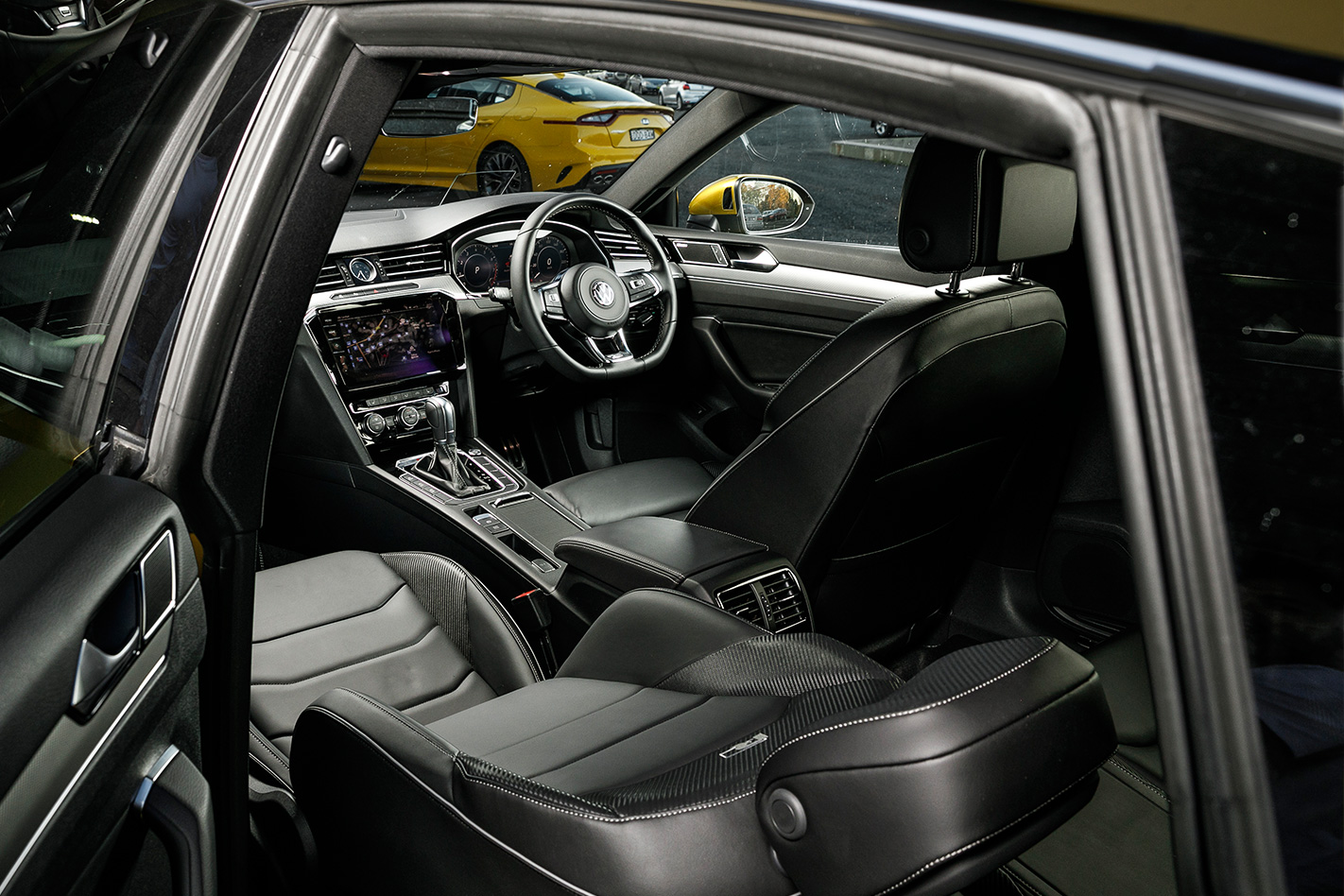
Neither can match the Commodore for sheer manspreading capacity inside. While the back of the SS-V might be lacking in features, you’ll forgive it that for the head, shoulder and legroom it affords. We love the Holden for the way it rides, even on 20-inch rubber. And for its evocative bent-eight fusillade. And its steering feel. And throttle response. And the way it’s the only car of the bunch that loves to be driven on the shift paddles. And, to be frank, a whole bunch of other things that still really matter to keen Aussie drivers.
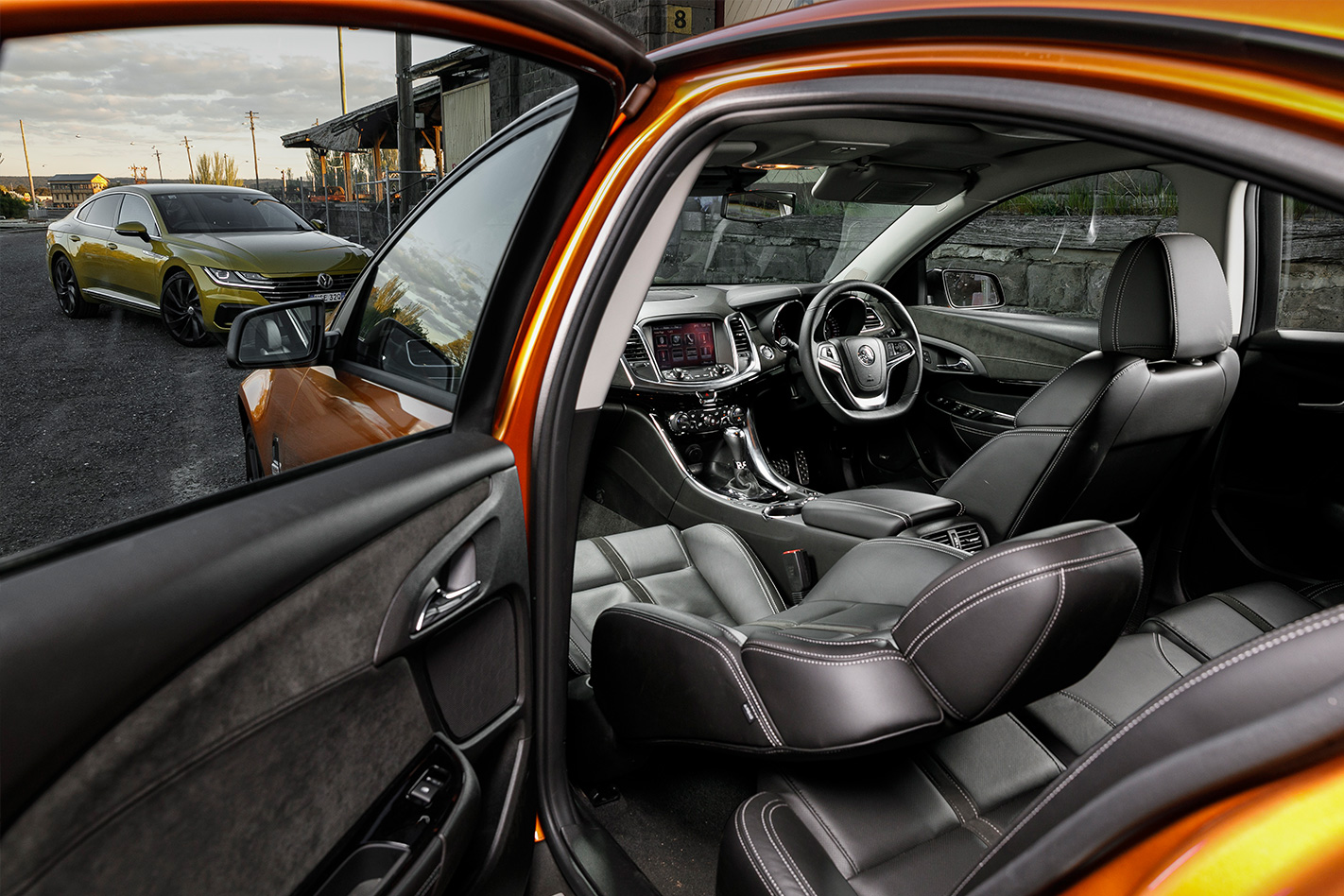
Those looking for big-hearted thud and blunder will probably be disappointed by the mute Stinger and the slightly self-conscious Arteon. The VFII Commodore vacates that particular division as undefeated champ and as much as it’s a wrench to hand back the keys, dwelling on what might have been isn’t going to get us far. So which of the other two get the nod? For sheer capability and involvement, it has to be the Stinger.
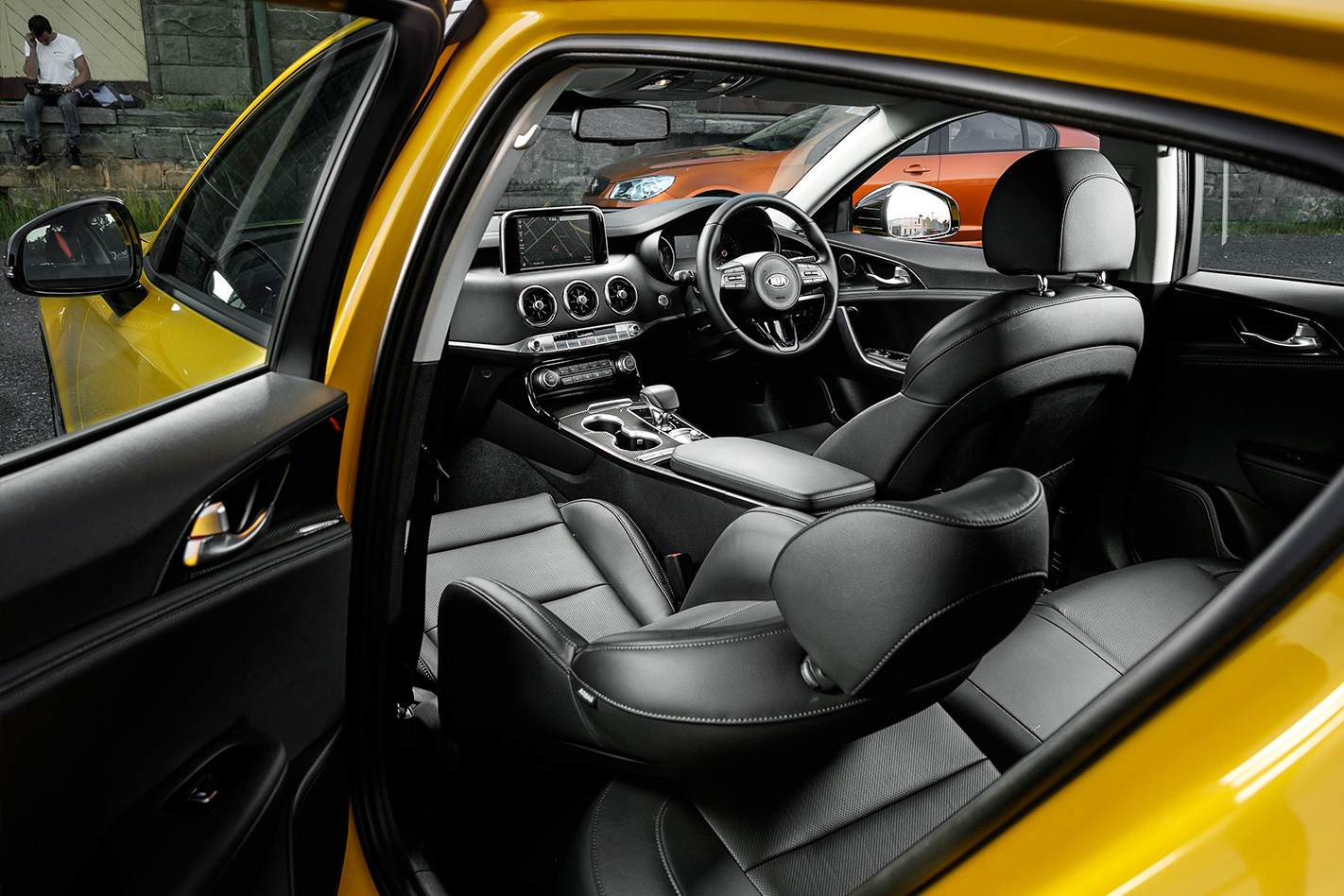
The Arteon 206 TSI R-Line emerges far from assaulted, however. In fact, it’s the surprise package of this comparison, dealing both rivals bloody noses in several key head-to-heads. As we brim the cars, record the final fuel figures and point the nose of the Commodore back towards Port Melbourne, it feels as if we’ve finally exorcised a few ghosts.
This farewell has lasted long enough. It’s a new game with new rules and a new cast, and the Kia Stinger plays it best.
